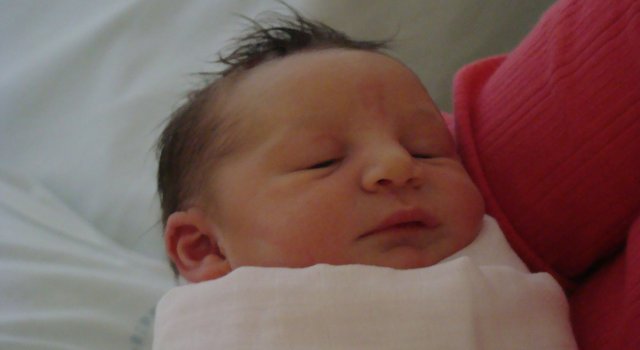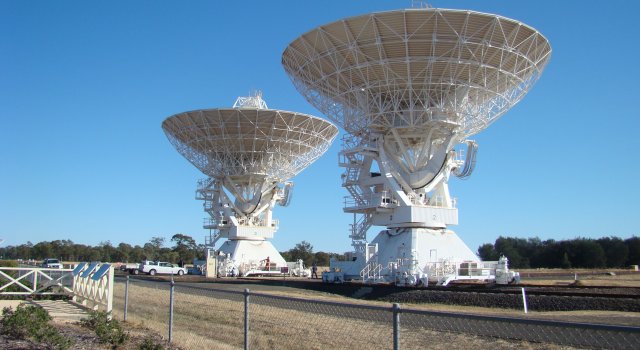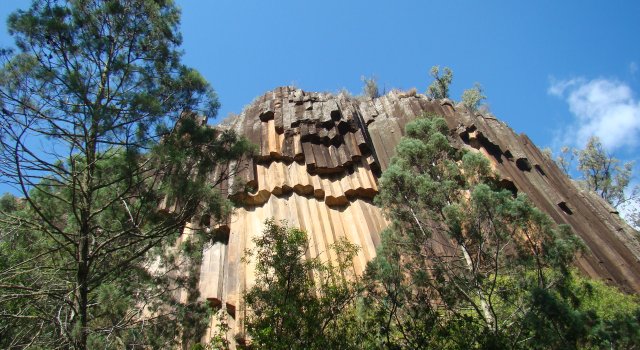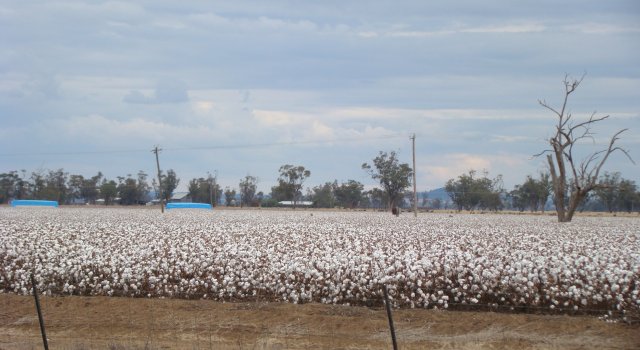

Our 2010 winter migration started on 17th May 2010 ... BUT ... Yesterday I became a great, grandfather and here is the young lady - Abby Jade Calleja.
I simply had to tell you!
Now about that trip ...
Monday 17th May .. slept at Narrabri.
We started with a big run from Sydney to Narrabri, about 550 klms. Of course it was a little late to start doing touristy stuff when we settled in. I didn't even get an antenna up.
Tuesday 18th May .. slept at Narrabri.

The first thing on our agenda was the CSIRO radio telescopes (six of them). We dodged in and around the kangaroos along a 22klm narrow road to get to the telescopes site. The visitors centre was unmanned and deserted. I was however fascinated by the big radio antenna dishes that are often moved along the rail tracks to the desired positions.
The CSIRO has apparently made some remarkable observations from these telescopes.

The second item on our agenda was this remarkable rock formation in Kaputar national park about 30klms north east of Narrabri. It is called "Sawn Rocks" and it was caused by a VERY slow cooling of the lave from a volcano.

Narrabri is surrounded by cotton plantations and we intended to visit the Australian Cotton Exhibition Centre - but it has been closed since late last year. From a distance the cotton fields look like they are covered in thick frost!!
Wednesday 19th May ... tonight we sleep at Brewarrina.
As we approached Walgett I saw a huge storage facility that turned out to be wheat. This surprised me because we have seen nothing but cotton fields so far.
Brewarrina is a very quiet town with a small population of 2000 or 3000 people, many of them are aboriginal. The caravan park was a beauty - it was tidy, clean and free! It was easy to put up a long wire antenna amongst the trees. The cultural centre had run out of keys for the caravan park amenities, but we got them at the Shell service station ???? search me!
Thursday 20th May. Tonite we sleep at Cunnamulla. At Bourke, the Darling
river has got WATER in it! [left]
The name of this lovely little spot on the North side of Bourke is not very attractive. [right] There is however, a tinge of green in the grass. [right]
[left] The border between Queensland and New South Wales has this amenity
(yes, it's a dunny). Apparently the Queenslanders get the shits with New South
Wales taxes. I can understand that!
[right] At Cunnamulla, there has been a number of collisions at the weir and hence this sign. I wonder if the collisions have been with boats or fish.
Friday 21st May. tonight we sleep at Thargominda. The drive from "Cunnamulla to Thargominda" was easier than trying to pronounce it, but interesting. A short stop at Eulo (below left) and we visited the opal shop / telegraph office / art gallery / old wares shop / weather bureau - thats a single shop by the way. Just up the road we called into the date farm (below right) to buy some "Sticky Date Liqueur" - for Joyce & Arthur. Well, actually, I did get a little more, like two extra bottles.
Interestingly,
at the date farm, we learnt how to cook a stew for BIG crowds (right).
The rest of the drive to Thargominda required us to fight off some of the wild animals in the area. Firstly, a frill neck lizard was removed from the road and then he posed nicely whilst I took this picture (lower left). Next we fought our way through a cloud of HUGE grasshoppers. If you think I'm exagerating about the size - look at this baby trying to rip the wiper blades from the car. (lower right).
Just before we reached Thargominda, we came across Bindegolly Lakes. This was the second time in 400 years that the lakes have been filled (lower left). The tree in the foreground seems to indicate how much water that this place has been getting lately. Then, at the other end of the scale, when we reached Thargominda, we saw the old bore which has been gushing "near boiling" water for over a hundred years. Apparently, the millions of kilowatts of energy is a nuisance!!!! The water is cooled before it is used for farming. This same flow of bore water was previously used to run a dynamo to power the street lighting in Thargominda for nearly a hundred years. The street lights in Thargominda were switched over to the local generator just one day later than Paris had their street lights electrically powered.
Saturday 22nd May.. tonight we sleep at Eromangah. Only mild excitement today. I had a friendly chat to the original "old man emu" (lower left), survived another swarm of locusts, and found a rather stately dunny situated 130 klm from anywhere!! (lower right).
We travelled some of the straightest roads I have seen (lower left) with some of the most informative signs (lower right).
Eromanga is a busy, thriving community of 10 or 12 people as the main street indicates (lower left). One of the exciting attractions is the machinery museum [note.. Frank]. Guess what this huge machine is for (lower right). If you work it out, the locals would also like to know. Eromanga is the furthest outback town from the coast.
We are now using PART TWO